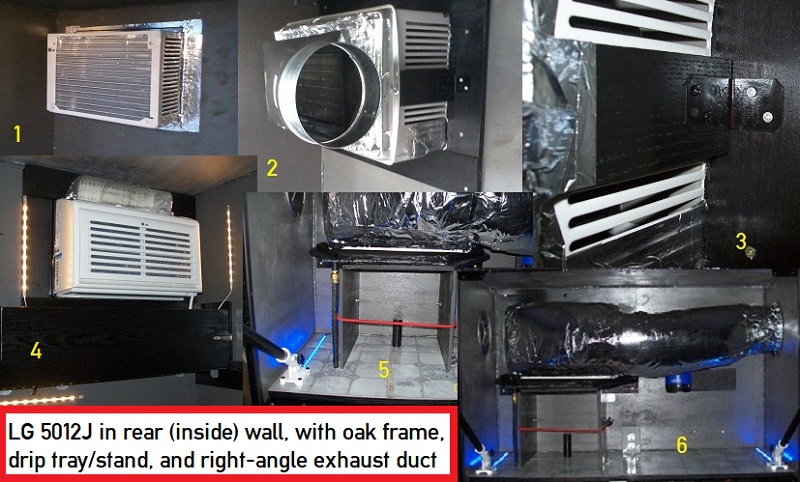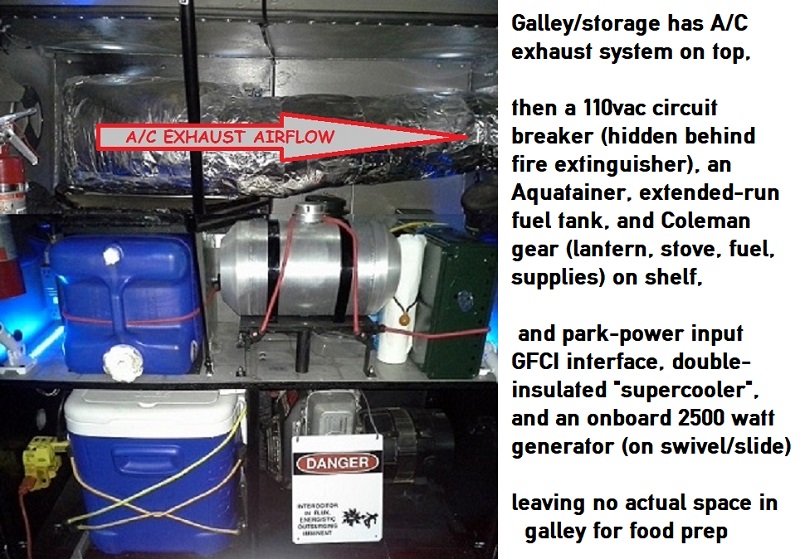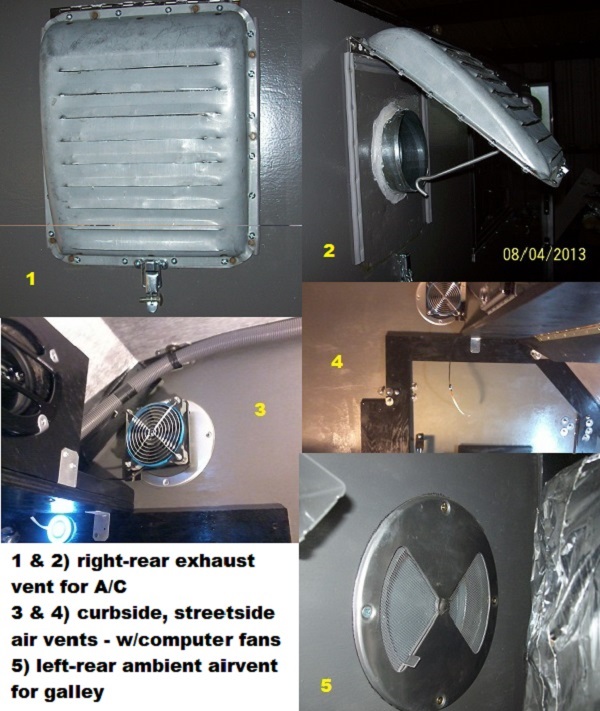from this thread http://www.tnttt.com/viewtopic.php?f=27&t=70770 you stated
Dahlia47 wrote: ...I specifically came here to ask about the exhaust and fresh air intake! Thank you!
I am finding out that some rv parks dont allow window a/c units. I havent bothered to ask any of them why. If anyone knows, inform me.

I may be able to get away with it, if I bring it inward. I dunno, ill find out....
* If this is your reason for wanting to move the A/C unit inside to "hide" it, then my A/C build might work for you
http://www.tnttt.com/viewtopic.php?f=21&t=54945&hilit=A%2FC+ducting...with modifications (I would probably alter my set-up if I were to do it all over). My A/C is totally enclosed in the trailer; if I wasn't using it, no one would even know it was there. It is mounted thru the rear bulkhead with the chassis in the galley, and the exhaust routed out to the curbside wall by using a right-angle ducting system ... completely insulated so noise and heat aren't problems when using the galley (mainly for storage). I made it this way so that the galley could be shut and locked whenever I was away, or on hot nights when it was running.

- the A/C is supported on a home-made drip pan/stand; the pan has never been dripped on, since this model LG uses all the condensate in cooling itself, it seems!
- air conditioner with exhaust ducting.jpg (173.43 KiB) Viewed 3308 times

- as is evident, storage took up all the 2/3 usable space in the galley, with the A/C exhaust duct filling the top 1/3
- galley-storage layout.jpg (195.54 KiB) Viewed 3308 times
* I was committed to using the side-vents that I had bought as the means to supply ambient air to cool the A/C chassis, and to exhaust the hot air from the rear of the unit. Therefore the exhaust needed to be turned 90 degrees to the right, and still be totally isolated from heating the galley/storage area, due to flammable items stored there. A system of floor vent boots, duct reducers, angle re-directors, and insulated ducting was used. The problem with getting it to work properly (caused by the heat remaining in the duct too long, causing thermal shutdown), was solved by opening the (now) false side-vent , just using it as a flap/cover, and by putting a high-flow/high-heat axial fan inside the duct itself. If I hadn't persisted with the hidden side-vent exhaust, I could've made a simple "boxed" exhaust, routed directly thru the hatch, and thru a common grille opening. With hatch closed, it would not be seen, and with hatch open, the exhaust would flow quickly away from galley items, into open air.

- side-vent used for A/C exhaust (pictures 1 &2) wouldn't allow enough hot air to exit in stock form; finally decided to make it into a flap/cover for the exhaust duct, with no restrictions
- usage of rain-proof vents.jpg (203.08 KiB) Viewed 3308 times



 I may be able to get away with it, if I bring it inward. I dunno, ill find out....
I may be able to get away with it, if I bring it inward. I dunno, ill find out....
 I would not do a build with out one now.
I would not do a build with out one now. 


 :
:
